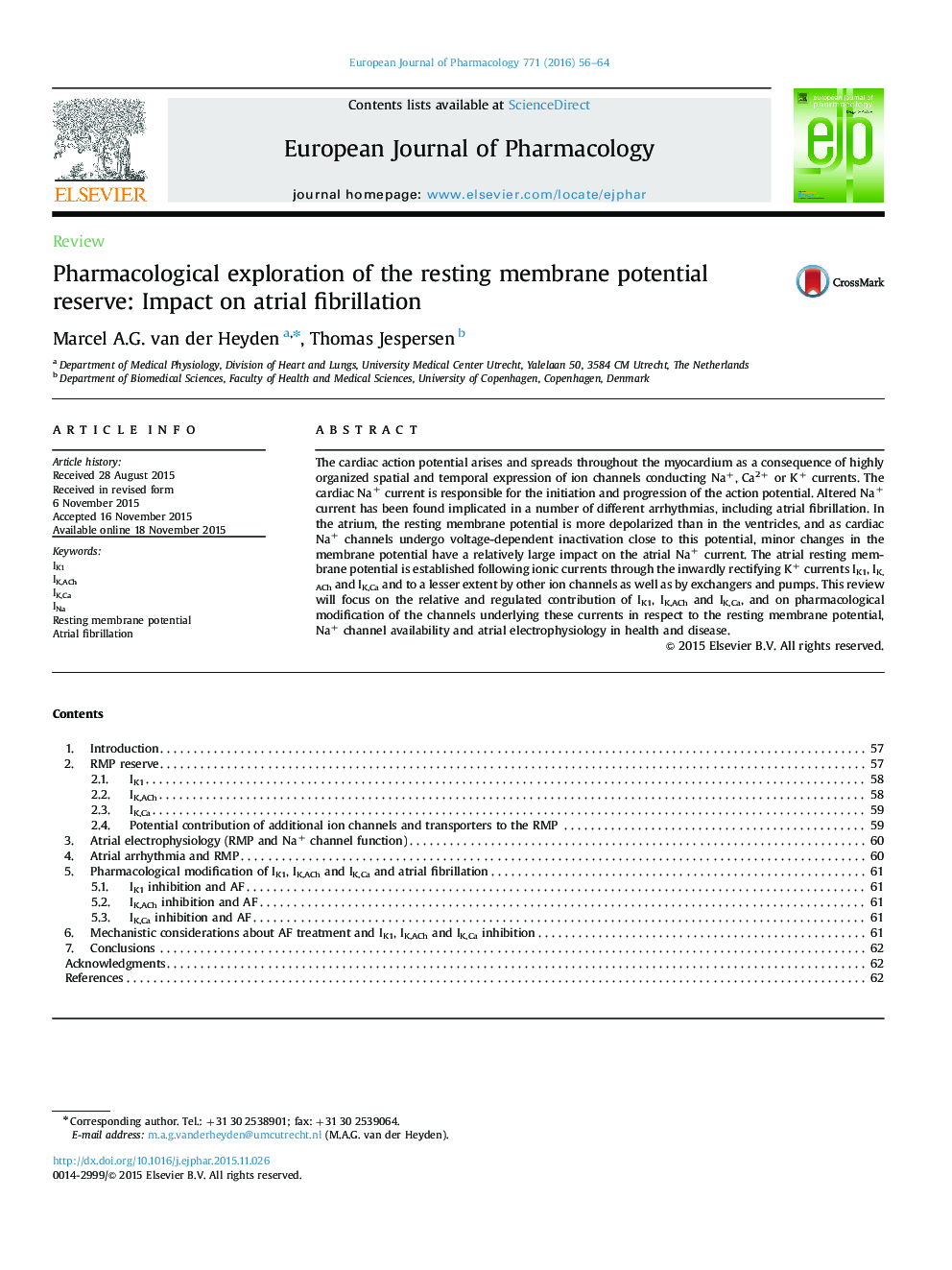| Article ID | Journal | Published Year | Pages | File Type |
|---|---|---|---|---|
| 2531021 | European Journal of Pharmacology | 2016 | 9 Pages |
The cardiac action potential arises and spreads throughout the myocardium as a consequence of highly organized spatial and temporal expression of ion channels conducting Na+, Ca2+ or K+ currents. The cardiac Na+ current is responsible for the initiation and progression of the action potential. Altered Na+ current has been found implicated in a number of different arrhythmias, including atrial fibrillation. In the atrium, the resting membrane potential is more depolarized than in the ventricles, and as cardiac Na+ channels undergo voltage-dependent inactivation close to this potential, minor changes in the membrane potential have a relatively large impact on the atrial Na+ current. The atrial resting membrane potential is established following ionic currents through the inwardly rectifying K+ currents IK1, IK,ACh and IK,Ca and to a lesser extent by other ion channels as well as by exchangers and pumps. This review will focus on the relative and regulated contribution of IK1, IK,ACh and IK,Ca, and on pharmacological modification of the channels underlying these currents in respect to the resting membrane potential, Na+ channel availability and atrial electrophysiology in health and disease.
